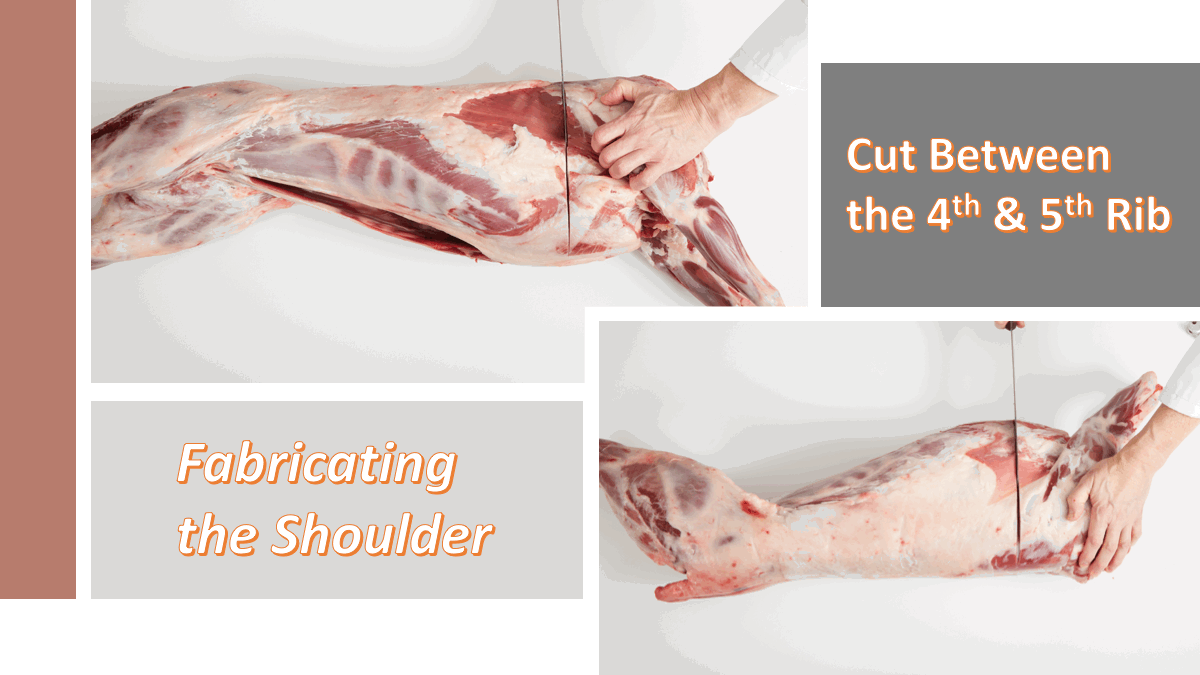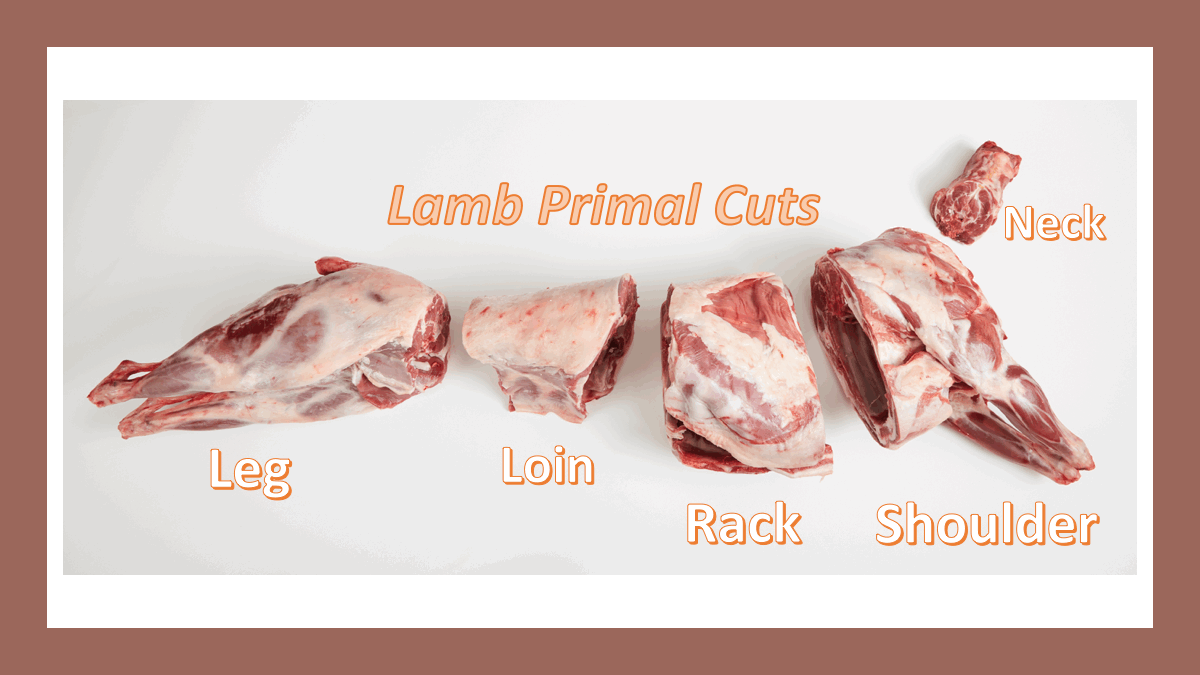Lamb Carcass Fabrication
When breaking down a lamb carcass into primal cuts start by studying the bone and muscle structure of the carcass. Check out our page on Meat Fabrication Methods for diagrams and tips. The lamb carcass has four major primal cuts; the shoulder, rack, loin, and leg. There are a couple of minor cuts, such as the shanks, ribs, and neck that are marketable too.
Keep the temperature of the meat-cutting room as cold as possible. Cold meat cuts better (ideal temperature 32-36F/0-2C) because the muscle and fat stays firmer. Partial freezing the meat helps too, but not so much that it becomes too stiff and difficult to bone with a knife. Frozen meat is often cut with a band saw, which saves time in fabrication, but a hand saw works well too. Always remember to cut meat with a knife and bones with a saw; so your first cut is usually through fat and muscle.
Start by removing the neck. You can also remove the shanks at the first joint.
To remove the shoulder, cut between the 4th and 5th ribs. Start by flipping the lamb on its back and counting the ribs from the inside of the carcass. Mark the separation between the ribs by inserting a boning knife at the spot on the inside of the carcass and through the outside of the carcass. Flip the carcass on its side and cut through the muscle with a knife on both sides of the rack.
To separate the should from the carcass, saw through the backbone of the spine.
To separate the rack from the carcass mark between the 12th and 13th ribs with a boning knife at the spot on the inside of the carcass and through the outside of the carcass.
Flip the carcass on its side and cut through the rib muscle with a knife on both sides of the rack. Saw through the backbone to separate the rack.
To remove the loin saddle, cut through the loin muscle at the front of the pelvis.
To separate the loin, saw through the backbone.
The Lamb Primal cuts separated.











